Anyway, I thought it'd be fun to look at ten more indispensable horror movies of the past decade. Although I'd place these below the previous top ten, the difference in quality is so minimal that this is damn near another top ten in its own right. The decade was just that good.
10. Cthulhu
Daniel Gildark, 2007

Cthulhu liberally re-works "The Shadow Over Innsmouth" as a slow-burn thriller centering on gay* professor Russ (Jason Cottle), whose return home involves confronting his cult-leader father and coming to terms with his birthright. Director Dan Gildark wisely jettisons Lovecraft's penchant for overwrought exposition, placing his attention on the conflicting desires of Russ, who longs for old flame (and former friend) Mike, while his family pulls him relentlessly toward their own interests, which may or may not involve apocalyptic fish deities. The film wanders freely toward its grim ending, pausing to take in details like an arcane stone and a spiral of names written in a boat house. Those small details prove as evocative as the sumptuous cinematography, which captures intimate scenes and ominous vistas with equal grace.
09. The Eye
The Pang Brothers, 2002
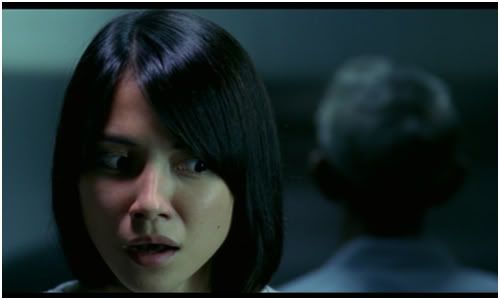
The Eye feels like a classic Twilight Zone episode. Here, Mun (the lovely Angelica Lee), a classical violinist, gets an eye transplant, and so, of course, she can now see the dead. Sure, there's more to the story, including an interesting subplot devoted to the eyes' original owner, but what makes the Pang Brothers demonstrate a mastery of classic suspense craft. Mun looks in the distance. Sees a shadow. But wait. It's gone. She thinks it's gone. Is it?...and that's when the ghost screams and reaches for her. Sure, it's traditional, even cliche, but rarely is cliche done so well. In a way, the stripped-to-its-essence plot explains why Mun plays the violin. The Eye is another instrument that can swing instantly from a murmur to a shriek.
08. Hostel
Eli Roth, 2005
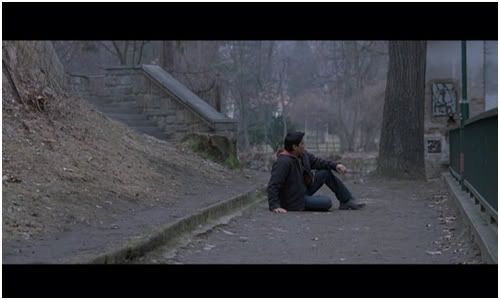
Pornography implies that the audience is titillated or excited by what's happening. Eli Roth's Hostel attacks that notion head-on. His film offers three fratty losers who long for titillation at every turn. They do drugs, have sex and wander around Europe looking for the next cheap thrill. Initially unsympathetic, the three men become sympathetic once captured by the agents of a company called Elite Hunting (shades of "The Most Dangerous Game"). Roth paints a discomfiting picture of Slovakia, always grey and crumbling and foggy, the sense of dislocation evoking movies like Don't Look Now and The Vanishing. By the time the violence begins, Roth's pushed the heroes from pathetic to likable, by both development and circumstance. There's no thrill to be had from their suffering. When you look closer, Hostel is the opposite of torture porn.
07. Ginger Snaps
John Fawcett, 2000
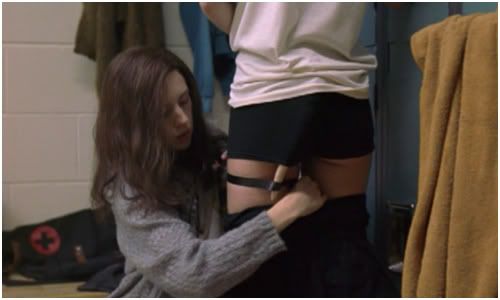
06. Uzumaki
Higuchinsky, 2000
I can't get this film out of my head. It's so goddamned weird. The film, based on a (much longer) manga comic by Junji Ito, condenses the story into a compact series of incidents where people are tortured by spirals. Any kind of spirals. Like, some people turn into snails and slide their way up the sides of buildings. Or, like, one woman discovers the coriolis of her inner ear is shaped like a spiral, so of course she has to dig it out. One guy just starts...twisting, and twisting, and twisting, until he looks like a human churro. These events may be related to a pond just outside of town, or maybe not. I don't remember. Honestly, I don't much care. This film functions best as a Lynchian series of interconnected vignettes, united by their baroque style and visual parallels.
05. The Devil's Rejects
Rob Zombie, 2005
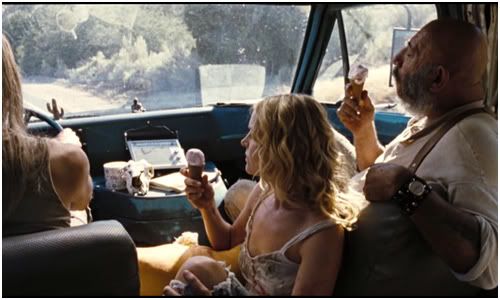
Rob Zombie's particular blend of Southern Fried Cruelty focuses in The Devil's Rejects, a film that justifies its title more than once. Elevating the dysfunctional Firefly clan to the level of protagonists, Zombie re-positions himself as a master of gallows humor. What the Fireflies do is unforgivable, but how they do it is...well, it's kind of funny. Okay, not really. But maybe a little. The presence of William Forsythe as a vengeful cop gives the story a boost of moral dimension, at least until even he descends far below the normal limits of human behavior. But while he angsts and furies, the Fireflies truly enjoy their sins. These are their interests. This is their bliss.
04. Slither
James Gunn, 2006
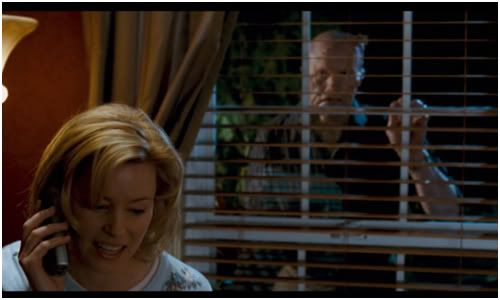
Sometimes I don't want slow-burn ghost movies or timely diatribes on global warming. Sometimes I want to have some goddamn fun. Slither is fun. Boy howdy, is Slither fun. It's a grue-filled grab bag of body horror, zombie horror, and Universal horror (ah, the monster and his bride), as filtered through the head of a demented student of Troma. Nathan Filion and Elizabeth Banks are perfectly cast, bringing a barely-there grin of self-awareness to their hero roles, while Michael Rooker keeps a glint of human need buried under layers of gooey makeup effects. Emphasizing the punchy, good-hearted nature of B-movies like Tremors and Re-Animator, James Gunn's joy behind the camera is contagious, with punchlines volleyed as often as space-slugs. Nothing like some snappy banter to break the tension after impaling a mind-controlled zombie.
03. The Orphanage
Juan Antonio Bayona, 2008
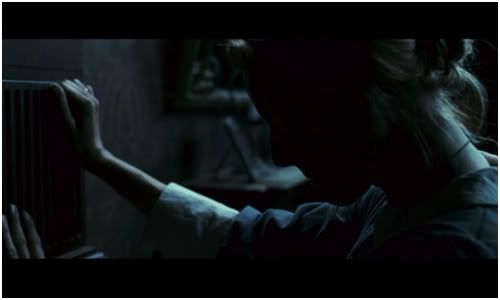
Laura (Belen Rueda) returns to her childhood orphanage with her son Simon, who is HIV positive. She wants the orphanage to resume operation, but Simon's rebellious spirit interrupts her plans and catalyzes the dormant ghosts that haunt the hallways. Because the ghosts come from Laura's past, they're invasive on both a visceral and an emotional level, and they peek at her and disappear in that classic way that ghosts are wont to do. Their impact on Simon, however, is what takes the story from efficient thrills into genuine tragedy. Bayona worked with Guillermo Del Toro in securing the funding for the picture, and like Del Toro's films, The Orphanage feels like a renewal even as it plumbs the depths of its genre.
02. The House of the Devil
Ti West, 2009
The House of the Devil is an exercise in genre purity. It lovingly assembles tropes of the genre. The virginal, quiet heroine. The ominous old man in the suit. The ruinous Gothic manse. The nearby cemetery. Previous to this film, Ti West made the diverting The Roost, but that film felt more ragged, less disciplined. This film manages to evoke words like "elegant" and "eldritch" as it weaves the simple tale of a babysitter house-sitting for an elderly couple. Why her? Why tonight? Who cares? Bask in the imagery. Enjoy the suspense, which builds and tightens until it finally snaps. This is not complex. It has no grand message or vital themes. I don't care. This is horror filmmaking, perfectly accomplished.
01. 28 Days Later
Danny Boyle, 2003
Over seven years later, what's so striking about 28 Days Later is its intimacy. The film watches its small cast adapt, evolve, grow, shrink, and otherwise fight the apocalyptic nightmare gripping Britain (and possibly the world). More than the ravening zombies, more than the images of an empty city, what I remember is the people. Playing Jim, Cillian Murphy affects a perfect balance of nervousness and wide-eyed wonder. Naomie Harris plays Selena as a determined warrior who's cut herself off from her own heart. Brendan Gleeson's Frank is an enormous teddy bear of a man. The film is mostly regarded as the founder of the fast zombie** mini-movement, but Boyle and Garland's humanism is what's made 28 Days Later survive so many years later.
* The film ultimately found released through a distributor specializing in LGBT cinema, and the film does not shy away from the homosexuality. There's nothing explicit, but plenty is implied. Viewers upset by such subjects should act accordingly by growing up.
** Some argue that the "infected" are not zombies in any sense, but they fulfill such a similar function (the horde of murderous automatons who used to be our friends and neighbors), that the distinction is negligible at best.


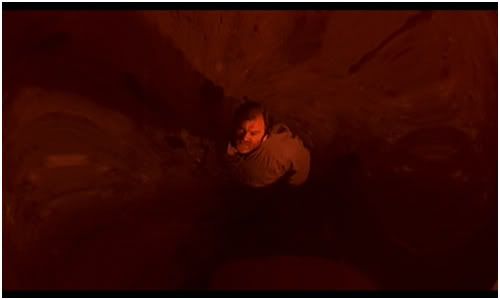
No comments:
Post a Comment